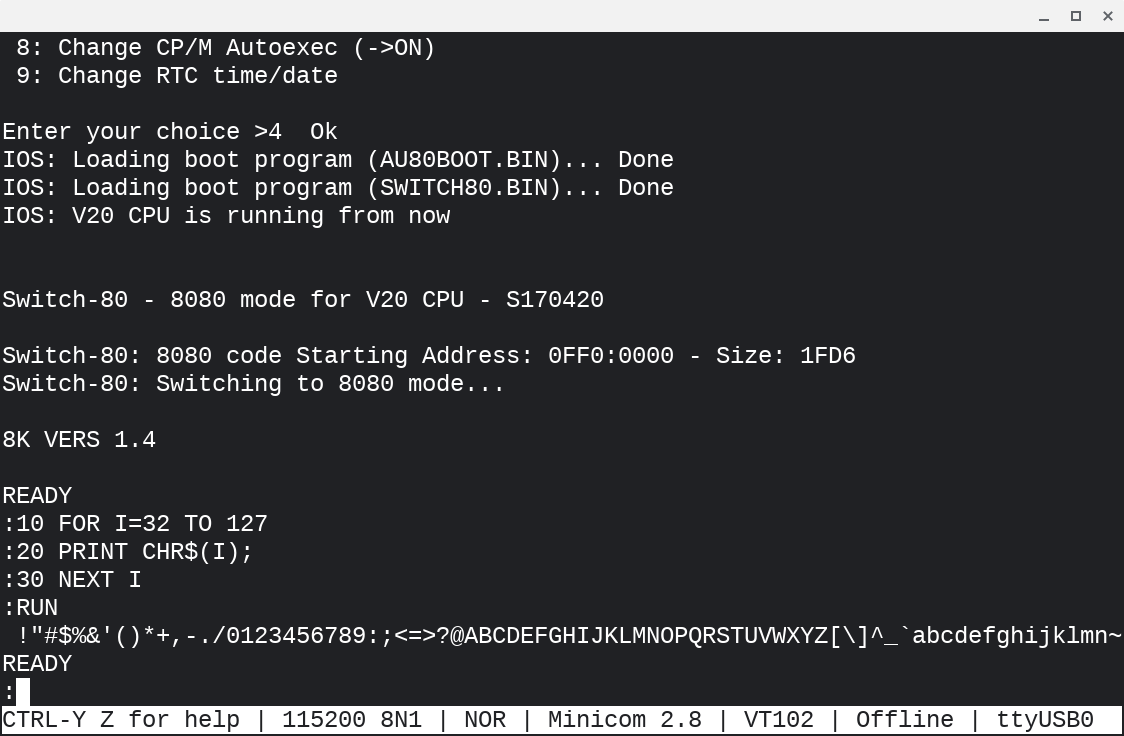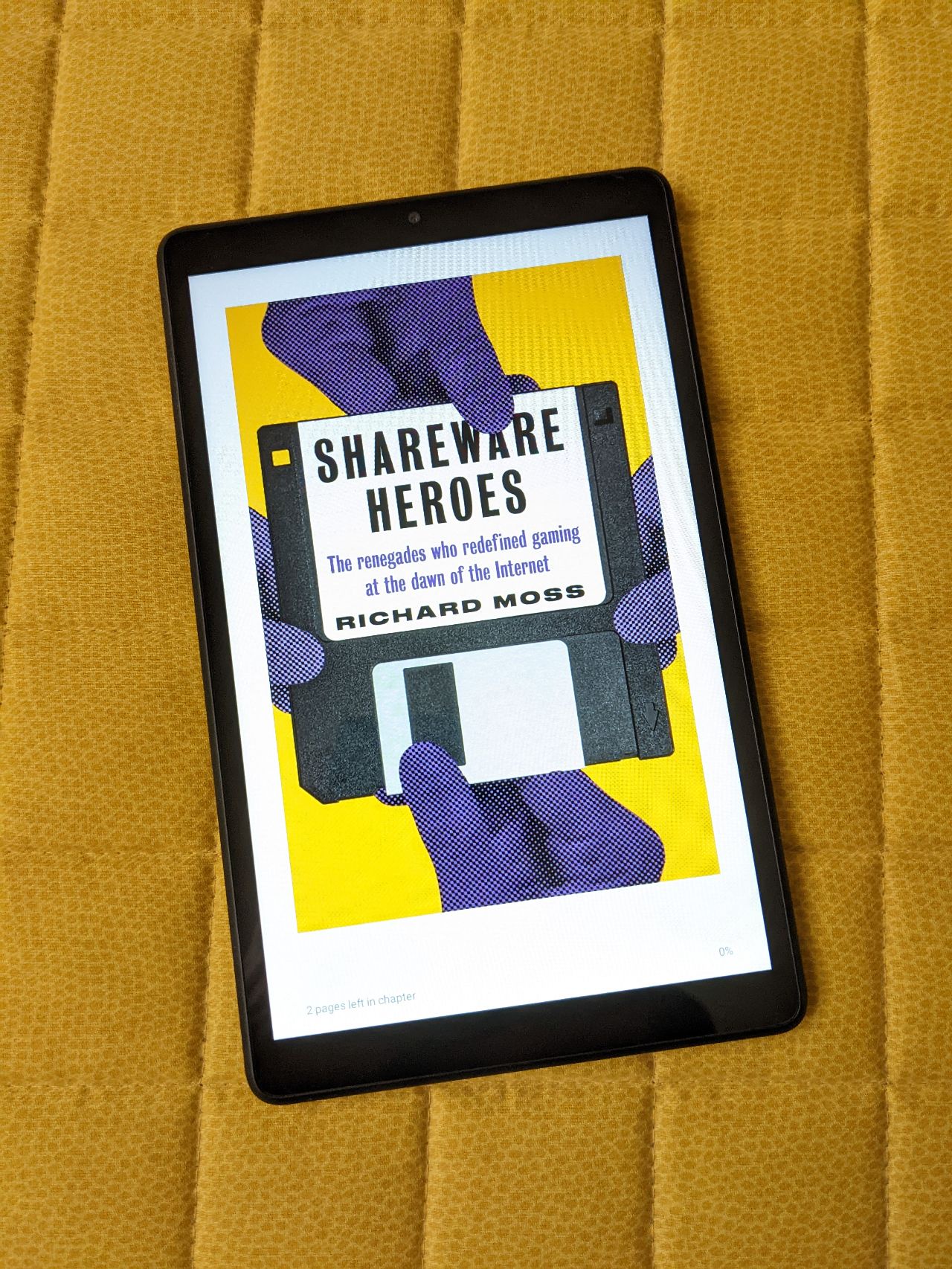Using a Bluetooth keyboard on Android
A few years ago I bought a cheap Bluetooth keyboard from Amazon.it. At €14, it was mostly an impulse buy for exploring mobile typing on the go and similar settings, such as work stations with limited desk space. This is the device:
I initially used the keyboard with the Android tablet and smartphone I had at the time, a 7” Lenovo Tab E7 and a Pixel 2 XL. I later repurposed the keyboard for the devices I replaced those with, a Lenovo Tab M8 HD 8” tablet and a Pixel 4 XL smartphone. Here is the keyboard with the Lenovo Tab M8 HD:
Despite the simplicity, it took me some trial and error to figure how to pair the keyboard and what keystrokes insert the symbols I need, such as accented letters. So I’m posting these notes in case you come across the same or similar keyboards.
Hardware and packaging
The keyboard is a cheap, compact, plastic 7” chiclet unit that comes with a small foldable stand to hold a tablet or phone. To charge the keyboard I plug it into my Chromebox via the keyboard’s mini-USB port.
The product and packaging have no branding and Android identifies it simply as “Bluetooth Keyboard”. The Amazon listing indicates FREALL as the manufacturer and 7INKEYBD-BK as the model.
The instruction sheet isn’t of great help for learning how to operate the keyboard. The document is short, incomplete, and inaccurate. But reading the Amazon reviews helped me understand the pairing procedure. I discovered the rest by experimenting.
Pairing
Although the keyboard can work with different mobile and desktop operating systems, I use it only with Android and this is the experience I’m sharing here. To pair the keyboard with an Android device:
- turn on the keyboard
- on the keyboard, press
CONNECT - on Android, turn on Bluetooth and start the pairing flow
- on the keyboard, press
Fn+Q - on Android, tap the keyboard entry
- on the keyboard, type the pairing code Android prompts to enter
- on the keyboard, press
Enter
After pairing is complete, on your Android device you’ll get a notification prompting to configure the keyboard by selecting a language and layout. This step may not be necessary.
From now on, to use the keyboard enable Bluetooth on Android and turn on the keyboard, which should connect automatically.
Keyboard shortcuts
The keys hold up to four labels for entering symbols, controlling media playback, or executing commands.
Accessing most of the symbols or functions of a key is often self-explanatory. For example, to type a blue symbol on a key, press that key while holding the modifier key with the blue Fn label.
Typing other characters or executing commands not printed on the keys is harder, so I include below some lists of useful keystrokes.
Symbols
You can directly insert the symbols in the following table by pressing the corresponding keystrokes. To type an accented character, press the keystroke that selects the accent you want and then press the character. For example, to get an e with a grave accent, è, press Alt +` and then e.
| Keystroke | Symbol |
|---|---|
Alt+E |
é |
Alt+ ` |
grave accent |
Alt+U |
umlaut |
Alt+I |
~ |
Alt+S |
ß |
Alt+c |
ç |
Alt+N |
ẽ |
Android commands and actions
The keyboard accepts the standard Android keyboard shortcuts. I found a few more and listed in the table below the ones that are handy, little known, or frequently used.
Launching apps
To launch one of these apps, here are the corresponding shortcuts:
| Keystroke | App |
|---|---|
| type search query | Google Search |
command |
Google Assistant |
command+B |
Chrome |
command+C |
Google Contacts |
command+E |
Gmail |
command+L |
Google Calendar |
command+S |
Google Messages |
Actions
The keyboard lets you invoke other Android features and navigation actions. Here are the ones I found:
| Keystroke | App |
|---|---|
Alt in text field |
emoji selector |
control+Enter |
set focus |
command+Delete |
Back |
command+Enter |
go to home screen |
command+N |
open notifications shade |
Discuss... Email | Reply @amoroso@oldbytes.space



